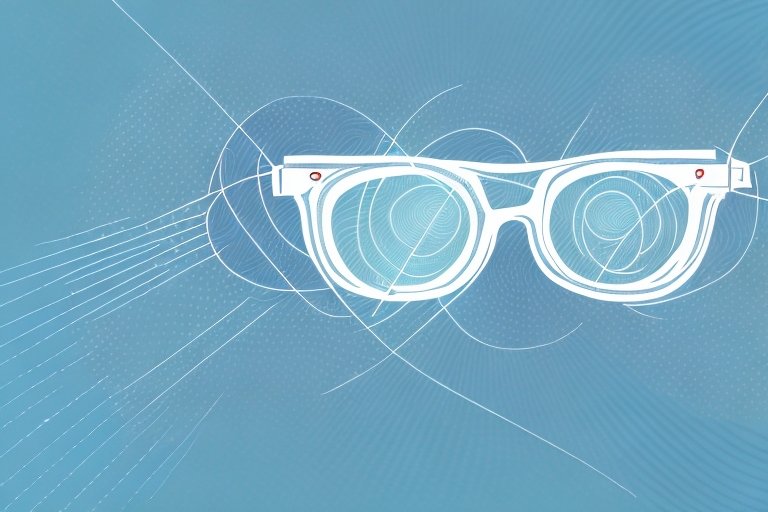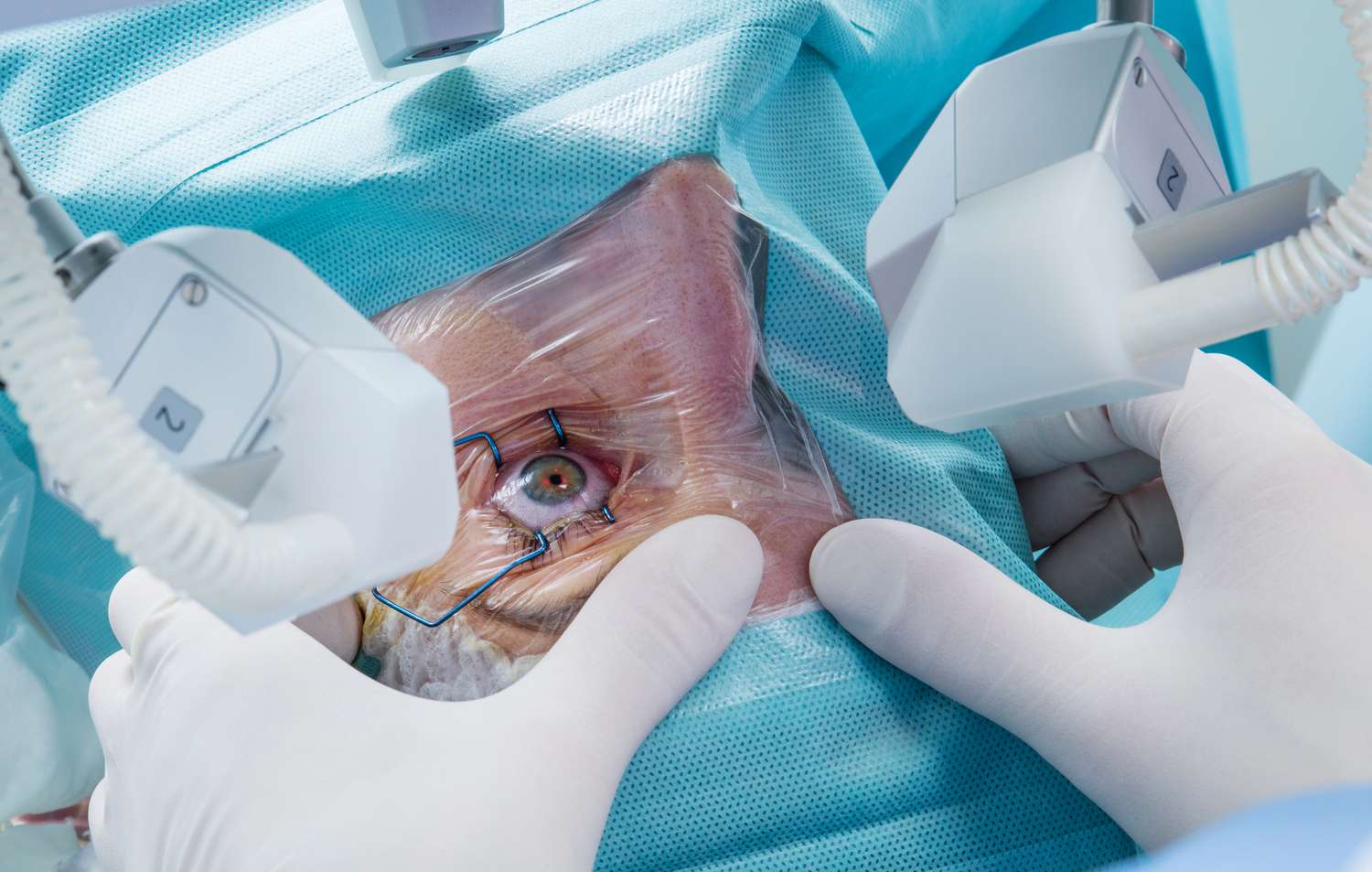If you’re tired of wearing glasses or dealing with the hassle of contact lenses, LASIK eye surgery may be an option to consider. LASIK, which stands for Laser-Assisted In Situ Keratomileusis, is a popular surgical procedure used to correct vision problems such as nearsightedness, farsightedness, and astigmatism. However, before making a decision, it’s important to understand what LASIK entails, the benefits it offers, as well as the potential risks and complications involved.
Understanding LASIK Eye Surgery
LASIK eye surgery is a revolutionary technique that has transformed the lives of millions of people around the world. It is a refractive surgery procedure that aims to correct various vision problems by reshaping the cornea, the clear front surface of the eye. By utilizing advanced laser technology, LASIK surgery provides a safe and effective solution for individuals seeking to improve their vision.
What is LASIK Eye Surgery?

LASIK, which stands for Laser-Assisted In Situ Keratomileusis, is a surgical procedure that aims to correct refractive errors such as nearsightedness (myopia), farsightedness (hyperopia), and astigmatism. These conditions occur when the cornea is not properly shaped, causing light to focus either in front of or behind the retina, resulting in blurred vision. LASIK surgery reshapes the cornea to ensure that light properly focuses on the retina, leading to clearer vision.
During the LASIK procedure, the surgeon uses a highly advanced laser to precisely reshape the cornea. This laser, known as an excimer laser, emits a cool ultraviolet light that gently removes a small amount of corneal tissue. By carefully adjusting the shape of the cornea, the surgeon can correct the refractive errors and improve the patient’s vision.
How Does LASIK Work?
The LASIK procedure consists of several steps that are performed with utmost precision and care. The first step involves creating a thin, hinged flap on the cornea. This flap serves as a protective cover and allows the surgeon access to the underlying corneal tissue. To create the flap, the surgeon uses a microkeratome, a specialized surgical instrument, or a femtosecond laser, a more advanced and precise technology.
Once the flap is created, the surgeon gently folds it back, exposing the corneal tissue beneath. This is where the magic of LASIK happens. The surgeon then uses the excimer laser to remove a small amount of corneal tissue, precisely reshaping the cornea according to the patient’s specific needs. The excimer laser works by delivering short pulses of ultraviolet light, which breaks the molecular bonds of the corneal tissue, allowing for precise tissue removal without generating heat. learn a few alternatives to Laser Eyer Surgery at https://dcis.info/the-various-alternatives-to-eye-surgery-lasik/
After the cornea is reshaped, the surgeon gently puts the flap back into place, where it naturally adheres without the need for stitches. The flap acts as a natural bandage, protecting the cornea and promoting faster healing. The entire LASIK procedure usually takes only a few minutes per eye, and the results are often immediate, with patients experiencing improved vision shortly after the surgery.
It is important to note that LASIK surgery is a highly personalized procedure. Each patient’s cornea is unique, and the surgeon carefully tailors the treatment to address the individual’s specific refractive error. This personalized approach ensures optimal outcomes and minimizes the risk of complications.
Furthermore, LASIK surgery has evolved significantly over the years, thanks to ongoing advancements in technology and surgical techniques. Today, LASIK is performed using state-of-the-art equipment and computer-guided systems, which further enhance the precision and safety of the procedure. These advancements have made LASIK one of the most popular and trusted vision correction methods available.
In conclusion, LASIK eye surgery is a remarkable procedure that has revolutionized the field of vision correction. By reshaping the cornea, LASIK surgery provides a long-lasting solution for individuals struggling with refractive errors. With its high success rates and rapid recovery times, LASIK has become a go-to choice for those seeking to improve their vision and reduce their dependence on glasses or contact lenses.
The Benefits of LASIK Eye Surgery

LASIK eye surgery is a popular procedure that offers numerous benefits for individuals seeking to improve their vision. Not only does it provide a significant improvement in vision, but it also offers a quick recovery time and long-term cost-effectiveness.
Improved Vision
One of the primary benefits of LASIK is the significant improvement in vision that patients experience. Many people achieve 20/20 vision or better after the procedure, reducing or eliminating the need for corrective eyewear. This improved vision can enhance quality of life and provide a newfound sense of freedom.
Imagine waking up in the morning and being able to see clearly without reaching for your glasses or putting in contact lenses. LASIK can make this a reality for many individuals. Whether you’re reading a book, driving a car, or simply enjoying the beauty of nature, having clear vision can greatly enhance your overall experience.
Furthermore, LASIK can correct various refractive errors, including nearsightedness, farsightedness, and astigmatism. This means that regardless of your specific vision needs, LASIK can help you achieve optimal visual acuity.
Quick Recovery Time
Another advantage of LASIK is its relatively quick recovery time. Most patients notice an improvement in vision immediately after the procedure, with minimal discomfort or pain. The surgery itself is typically completed within 15 minutes per eye, making it a convenient option for individuals with busy schedules.
Within a day or two, the majority of individuals can return to their normal activities, including work and driving. This means that you won’t have to take an extended leave of absence or rely on others for transportation while you recover. LASIK allows you to get back to your daily routine quickly, without any significant interruptions.
It’s important to note that while the recovery time is generally quick, each individual’s healing process may vary. Your eye doctor will provide you with specific post-operative instructions to ensure a smooth recovery and optimal results.
Long-Term Cost Effectiveness
While LASIK may seem like a significant investment upfront, it can actually be cost-effective in the long run. Consider the ongoing expenses associated with contact lenses or glasses, including replacement costs, cleaning solutions, and regular eye exams. Over time, LASIK can save patients money and provide them with greater convenience.
When you opt for LASIK, you eliminate the need for purchasing contact lenses or glasses, which can be quite expensive over the years. Additionally, you won’t have to worry about the hassle of cleaning and maintaining contact lenses or constantly updating your glasses prescription.
Furthermore, LASIK can reduce the risk of eye infections and other complications that may arise from wearing contact lenses. This not only saves you money on potential medical expenses but also provides you with peace of mind knowing that your eyes are less susceptible to infections.
It’s important to consider the long-term benefits and cost savings that LASIK can provide. While the upfront cost may seem daunting, the convenience, improved vision, and potential savings in the long run make it a worthwhile investment for many individuals.
Potential Risks and Complications of LASIK

Undergoing LASIK surgery can be a life-changing experience, providing patients with improved vision and freedom from glasses or contact lenses. However, like any surgical procedure, there are potential risks and complications that patients should be aware of before making the decision to proceed.
Temporary Discomfort and Vision Disturbances
Following LASIK surgery, it is common to experience some temporary discomfort. This may include dryness, itching, and mild pain as the eyes heal and adjust to the changes made during the procedure. It is important to note that these discomforts are typically short-lived and resolve within a few days or weeks.
In addition to temporary discomfort, some patients may notice temporary vision disturbances after LASIK. These can include glare, halos, or double vision. These disturbances are usually a result of the cornea adjusting to its new shape and can also resolve within a few days or weeks.
Dry Eyes
One of the most common side effects of LASIK is temporary dry eyes. This occurs when the eyes do not produce enough tears to keep them adequately lubricated. It is important to note that this side effect is usually temporary and improves over time as the eyes heal.
During the healing process, the tear production glands in the eyes may take some time to fully recover, leading to dryness and discomfort. To manage this side effect, patients are often advised to use artificial tears or lubricating eye drops to keep the eyes moist. These eye drops can provide relief and help prevent any potential complications associated with dry eyes.
Flap Complications
In rare cases, there may be complications related to the creation or healing of the corneal flap during LASIK surgery. The corneal flap is a thin layer of tissue that is lifted and reshaped to correct the patient’s vision. While the risk of flap-related complications is extremely low, it is important to be aware of them.
Complications related to the corneal flap can include infection, inflammation, or an incomplete flap. However, it is essential to remember that these complications are rare and can be minimized by careful screening of patients and the expertise of a skilled surgeon.
During the pre-surgical evaluation, the surgeon will thoroughly examine the patient’s eyes to determine if they are suitable candidates for LASIK. This evaluation includes measuring the thickness and shape of the cornea, assessing the overall health of the eyes, and identifying any potential risk factors that may increase the chances of complications.
Furthermore, the surgical technique used by the surgeon plays a crucial role in minimizing the risk of flap-related complications. With advancements in technology and surgical techniques, LASIK has become an increasingly safe and effective procedure, with a low incidence of complications.
In conclusion, while LASIK surgery offers numerous benefits and has a high success rate, it is important for patients to be aware of the potential risks and complications. By understanding these risks and discussing them with a qualified surgeon, patients can make an informed decision about whether LASIK is the right choice for them.
Who is an Ideal Candidate for LASIK?
Age and Health Considerations
While LASIK can be a great option for many individuals, not everyone is a suitable candidate. Generally, candidates should be at least 18 years old and have stable vision for at least one year. Additionally, individuals should be in good overall health, free from any eye infections or diseases that may compromise the success of the surgery. learn more about Lasik at https://dcis.info
Vision Prescription Requirements
As with any surgical procedure, certain vision prescription requirements must be met to ensure the best outcomes. Candidates should have a certain degree of nearsightedness, farsightedness, or astigmatism, as determined by an eye care professional. Your eye doctor will thoroughly assess your prescription to determine if LASIK is the right option for you.
Lifestyle Considerations
Before undergoing LASIK, it’s important to consider your lifestyle and visual needs. If your work or hobbies involve activities that may pose a risk to the eyes, such as contact sports or intense physical labor, you may need to explore alternative vision correction options. Additionally, individuals who have jobs that require high visual precision, such as pilots or military personnel, should discuss their options with their eye care provider.
In conclusion, LASIK eye surgery can provide life-changing benefits for individuals seeking to improve their vision. However, it’s important to carefully weigh the potential risks and complications associated with the procedure. By consulting with your eye care professional and considering factors such as age, prescription requirements, and lifestyle, you can determine if LASIK is the right choice for you.+




